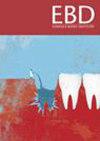Fluoride: friend or foe? Exploring the effect of fluoride exposure on children’s IQ scores
IF 2.3
Q3 Dentistry
引用次数: 0
Abstract
Taylor KW, Eftim SE, Sibrizzi CA, Blain RB, Magnuson K, Hartman PA, Rooney AA, Bucher JR. Fluoride Exposure and Children’s IQ Scores: A Systematic Review and Meta-Analysis. JAMA Pediatr 2025; 179: 282–292. A literature search without language restrictions was undertaken in October 2023 using the following databases: BIOSIS, Embase, PsycINFO, PubMed, Scopus, Web of Science, CNKI, and Wanfang. Two independent reviewers screened studies based on the title and abstract. Studies were included if the exposure was fluoride and the outcome was a quantitative measure of children’s intelligence. In studies with multiple fluoride exposure levels, the highest was considered the exposure and the lowest the reference. Exclusion criteria included case reports, articles without original data, and conference abstracts. Full text articles were then screened. Translation assistance was obtained for non-English studies. Data was extracted by one extractor and verified by a second. Risk-of-bias was evaluated by two independent trained assessors using the National Toxicology Programme’s OHAT approach. Three meta-analyses were conducted: mean-effects, dose-response mean-effects, and regression slopes. Subgroup and sensitivity analyses were undertaken, including subgroup analyses without high risk-of-bias studies. 74 studies were included, of which 59 reported mean IQ scores for group-level exposures and 19 reported regression slopes for individual-level exposures. Children exposed to higher levels of fluoride had statistically significantly lower IQs than those exposed to lower levels (standardised mean difference (SMD), −0.45; 95%CI, −0.57 to −0.33; P < 0.001). A dose-response association was also reported, with lower IQ scores reported with increasing fluoride exposure with a SMD of −0.15 (95%CI, −0.20 to −0.11; P < 0.001) for water fluoride levels and −0.15 (95%CI, −0.23 to −0.07; P < 0.001) for urinary fluoride levels. Fluoride exposure concentrations of <4 mg/L, <2 mg/L, and <1.5 mg/L were analysed. For water fluoride <1.5 mg/L, the association was not statistically significant. In the regression slopes meta-analysis, a 1 mg/L increase in urinary fluoride was associated with a decrease in IQ score of 1.63 points (95%CI, −2.33 to −0.93; P < 0.001); the effect size was smaller when analysis was limited to low risk-of-bias studies (decrease of 1.14 points (95%CI, −1.68 to −0.61; P < 0.001)). An inverse association was found between fluoride exposure and children’s IQ scores, including an inverse dose-response association. This association was less certain at water fluoride concentrations <1.5 mg/L.氟化物:是敌是友?探讨氟化物暴露对儿童智商分数的影响。
Taylor KW, Eftim SE, Sibrizzi CA, Blain RB, Magnuson K, Hartman PA, Rooney AA, Bucher JR。氟化物暴露与儿童智商:系统评价和荟萃分析。JAMA pediatrics 2025;179: 282 - 292。数据来源:于2023年10月进行无语言限制的文献检索,检索数据库为:BIOSIS、Embase、PsycINFO、PubMed、Scopus、Web of Science、CNKI、万方。研究选择:两位独立审稿人根据标题和摘要筛选研究。如果接触的是氟化物,研究结果是对儿童智力的定量测量,研究也包括在内。在有多种氟化物接触水平的研究中,最高的被认为是接触,最低的被认为是参考。排除标准包括病例报告、没有原始数据的文章和会议摘要。然后对全文文章进行筛选。非英语研究获得了翻译协助。数据提取和合成:数据由一个提取器提取,由另一个提取器验证。偏倚风险由两名经过独立培训的评估人员使用国家毒理学规划的OHAT方法进行评估。进行了三项荟萃分析:平均效应、剂量-反应平均效应和回归斜率。进行了亚组和敏感性分析,包括无高偏倚风险研究的亚组分析。结果:纳入了74项研究,其中59项报告了群体水平暴露的平均智商分数,19项报告了个人水平暴露的回归斜率。接触较高水平氟化物的儿童的智商在统计学上显著低于接触较低水平氟化物的儿童(标准化平均差(SMD), -0.45;95%CI, -0.57 ~ -0.33;结论:氟化物暴露与儿童智商得分呈负相关,包括剂量反应负相关。这种联系在水的氟化物浓度上不太确定
本文章由计算机程序翻译,如有差异,请以英文原文为准。
求助全文
约1分钟内获得全文
求助全文
来源期刊

Evidence-based dentistry
Dentistry-Dentistry (all)
CiteScore
2.50
自引率
0.00%
发文量
77
期刊介绍:
Evidence-Based Dentistry delivers the best available evidence on the latest developments in oral health. We evaluate the evidence and provide guidance concerning the value of the author''s conclusions. We keep dentistry up to date with new approaches, exploring a wide range of the latest developments through an accessible expert commentary. Original papers and relevant publications are condensed into digestible summaries, drawing attention to the current methods and findings. We are a central resource for the most cutting edge and relevant issues concerning the evidence-based approach in dentistry today. Evidence-Based Dentistry is published by Springer Nature on behalf of the British Dental Association.
 求助内容:
求助内容: 应助结果提醒方式:
应助结果提醒方式:


